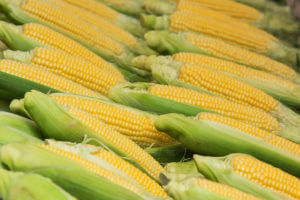
Demand for Corn in the Market; How Coronavirus Influences It
Even though precious metals are getting most of the attention in the commodities complex this year. Still, investors are focused on agriculture exchange-traded products.
China is the world’s largest soybean importer. It has promised to increase purchases of US farm goods as part of the Phase one trade deal. China has already bought one mln metric tons of European Union wheat so far this season. Now the country could look to US suppliers under the new trade accord.

Todd Hultman, the lead analyst at commodity market information and analysis provider DTN, says that the growing coronavirus infection count and death tolls have had a bearish emotional impact on commodity prices. They are most sensitive to Chinese demand, including soybeans.
Corn usually trades at its cost of production and spikes during supply shocks. For example, in 2019, the USDA (US Department of Agriculture) lowered production expectations due to unfavorable weather in the US corn belt. It helped corn prices rise by over 20%.
Corn Comes Calling
An increasing global middle class has also raised the demand for grains both directly and indirectly. It is especially true in the emerging markets where they shift toward greater meat consumption, which requires high grain-based animal feed. In 2018, half the world reached the middle class. Supposedly, by 2030, the middle class will dominate the global population.
Dan Cekander, president of the grain-market service DC Analysis, says that the coronavirus has delayed Chinese buying under the trade pact. There have been doubts that China may not meet the trade deal obligation. According to the agreement, the country must purchase $36.5 billion of US agricultural commodities this year and $43.5 billion in 2021.
Todd Hubbs, an analyst at the Department of Agricultural and Consumer Economics, says that the prospect of a large 2020 corn crop may limit the upside potential for corn prices this year even under a more robust demand scenario.
However, some commodities markets analysts believe soft commodities are going to bounce back once the coronavirus issue diminishes. It will potentially bring a buying opportunity for CORN in the process.
CORN tracks three futures contracts for corn. They are traded on the Chicago Board of Trade. Including 35% second to expire agreements, 30% third to terminate agreements, and 35% December following the third to expire. The various contract exposures help the fund narrow the harmful effects of operating agreements, mainly during a market in contango.
-
Support
-
Platform
-
Spread
-
Trading Instrument




